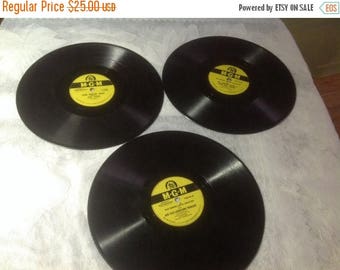

Every time the record spins, your turntable is tasked with reading and decoding the continuous spiral groove that starts at the edge of the disk and spirals inward in real-time. The less you play the record, the better it sounds. The varying part of the signal, which most audiophiles call the “warmth” or “natural sound” of a vinyl record, is a representation of another time-varying quantity-how intact the grooves are. Unlike the more common digital sound transmission that MP3s and streamable music rely on, analog transmitters omit a continuous signal that varies depending on the pressure of the needle on the grooves. Record players convert vibrations from the grooves on a vinyl into analog sound waves. This proved fantastic for the purpose of sound quality potential, but the vinyl cylinders (not even disks!) could only store around five minutes worth of sound on a single side. The average user could produce speeds up to 80 RPM. This primitive listening device used the energy from a hand crank to power the turntable’s platter and create revolutions per minute. Our expert photo scanning technician will carefully scan all aspects of the artwork on premium flatbed scanners and then digitally alter them to fit specifically to your project.None other than Thomas Edison, the most electric inventor in American history, invented the very first phonograph. At DVD Your Memories we can preserve that special album artwork and print it directly to your disc and CD inserts. Many great artists and photographers were comissioned to create some of the best album covers in history during the period of vinyl record popularity. LP Records were known for their legendary cover art. There is no fee if your drive does not have data on it or if we’ve provided the drive for you. If you are bringing in your own flash/hard drive with data on it to store these files, there is a $15 setup fee. The default MP3 settings are 320 kilobits per second at 44,100 hertz. You can specify bit rate, number of channels as well as hertz for your custom MP3 or WAV file. Transferring LP to MP3 While CDs are the most convenient format for most customers, we can transfer your LP audio into just about any file format you can think of. This is mostly caused by dust and dirt that has clung onto your record over the years. Pop/Click removal – Older audio generally exhibits some form of degradation such as clicking and popping.Depending on the quality of the original recording, we can produce some amazing results. Remove static hums and hiss from your audio – We can greatly diminish the presence of a static humming or hiss sound that persists throughout your recording.Custom-placed track splitting – We can strategically place track splits anywhere in your recording!.Remove unwanted sound from recordings – If you had ever wanted to clean up your LP by removing randomly placed blips of static or noise, we can remove any unwanted noises or whole chunks of audio.If you have an LP that plays either too fast, or too slow, we can fix this by digitally adjusting the playback speed to the perfect level. Older vinyl records were often recorded at different speeds. Our audio transfer technicians are trained on a wide variety of methods to remedy audio issues. We can combine or mix your audio in any fashion you choose.īasic LP Audio Editing With our basic audio editing services, we can help fix up the minor problems that may be present in your LP recordings.

Typically in this event, after the LP audio transfer, we would split the recording evenly in order to fit everything onto the other disc. For LPs over 74 minutes, we will have to break up the tape onto two CDs in order to process the order. Keep in mind that audio CDs can hold up to 74 minutes of recording time. Once the recording is determined to be of optimum quality, it will then be burned to a 100-year archival audio CD and then labeled to your specifications. If needed, we offer basic audio cleanup services to remove recording errors or other problems which are common in older analog recordings.
#Converting 33 rpm records to cds software
Once the vinyl record to CD order is completed, we store your files to our in-house computers, the audio is run through audio editing software which allows the audio transfer technician to determine the sound quality of the LP to CD transfer. If we notice something that would prevent the transfer of your LP to CD, we will give you a call to let you know the source of the problem, and if it’s repairable. LP to CD Transfer Process Prior to the LP to CD transfer, your media will be inspected by our vinyl record transfer technician to check for any inconsistancies or damage to the tape or vinyl.


 0 kommentar(er)
0 kommentar(er)
